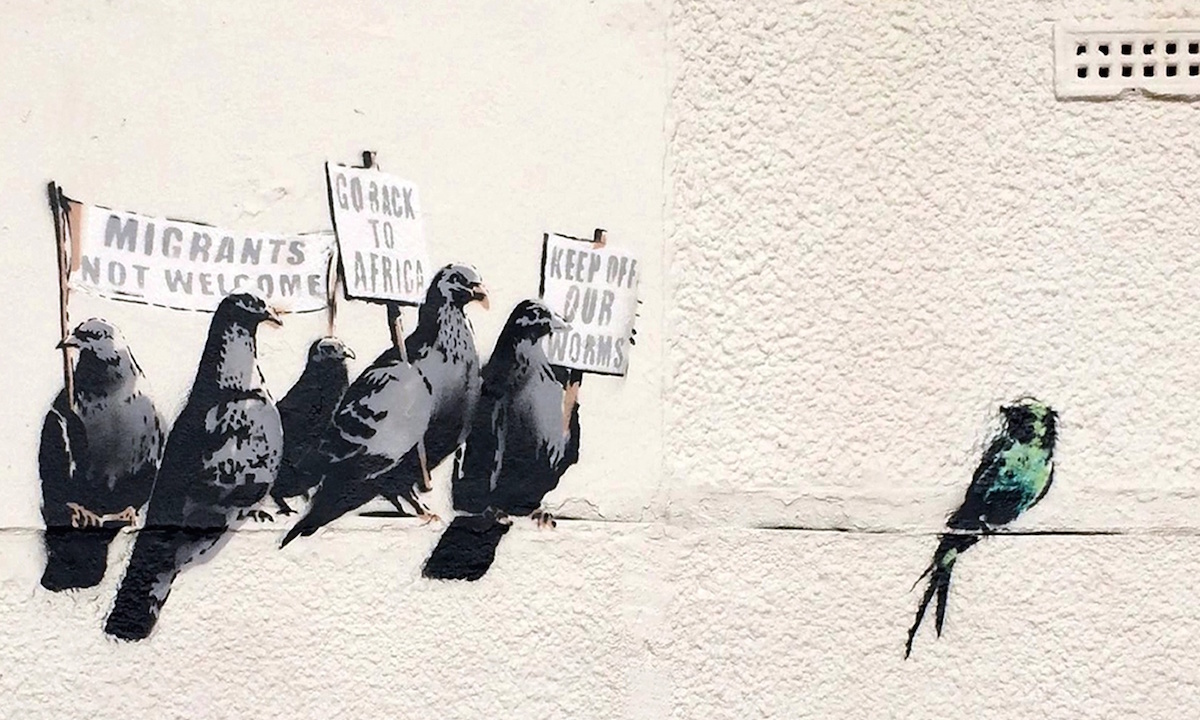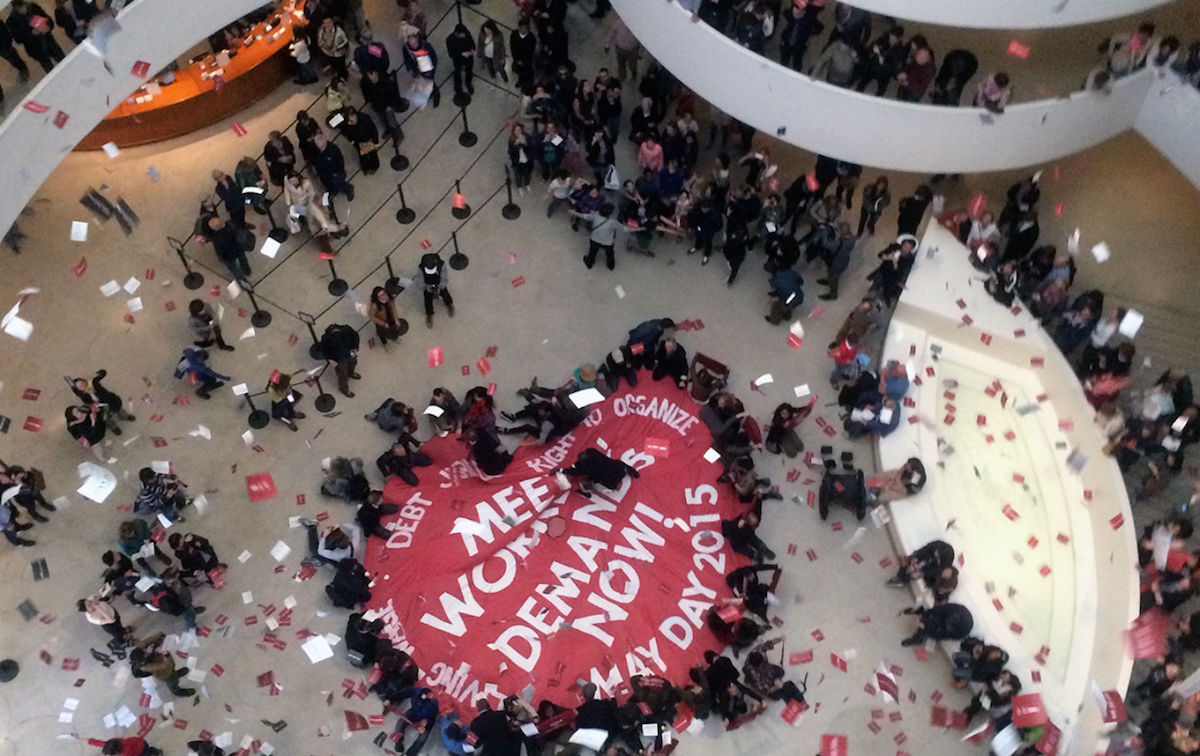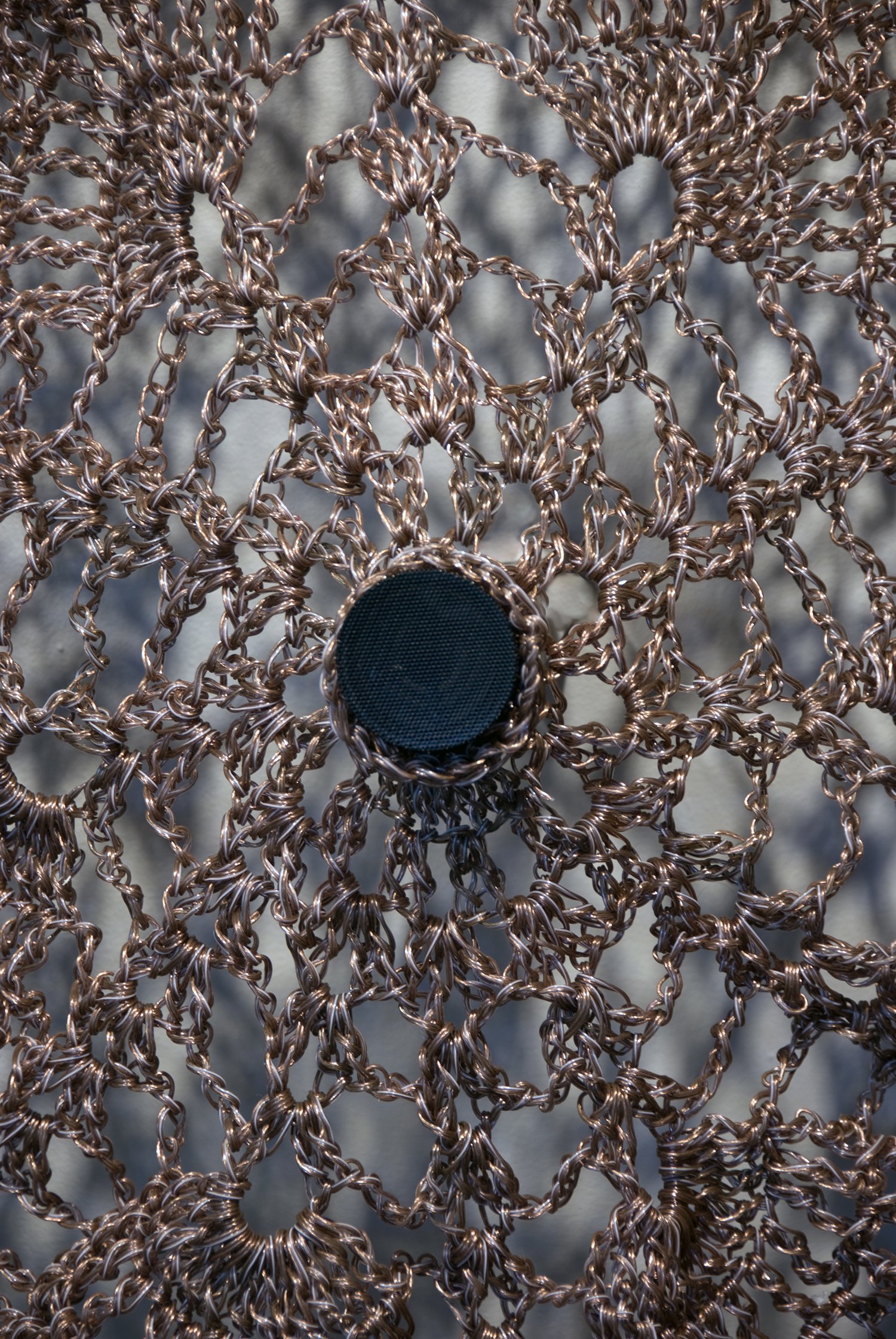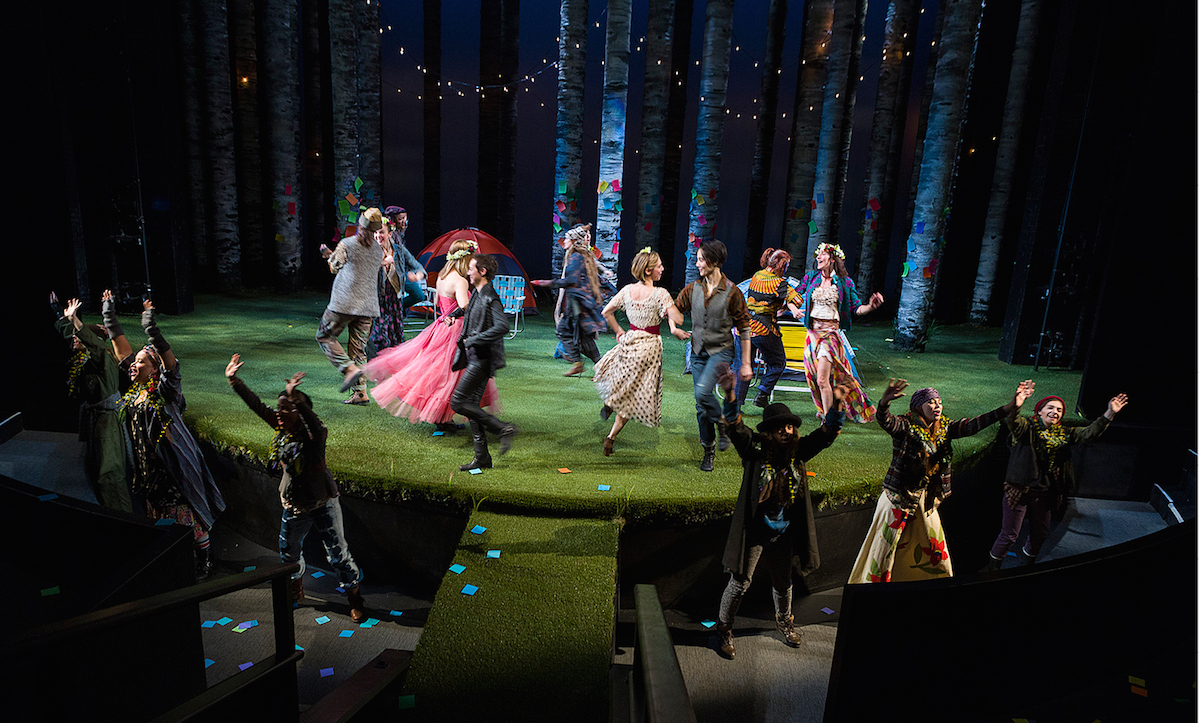The Current Dynamics of Art and Politics by Kerr Houston
Grand statements about the landscape of contemporary art often read as strained or hyperbolically provocative. But here’s one that seems relatively safe: we are currently in something of a golden age for art that is motivated by an activist spirit and an underlying interest in social justice.
The past couple of decades are full of celebrated examples. Ai Weiwei works to facilitate the collection of the names of victims of the Sichuan earthquake despite governmental intransigence. Theaster Gates renovates a cluster of abandoned structures on Chicago’s South Side. Thomas Hirschhorn oversees the construction of a group of pavilions and a series of workshops and events in the Bronx, Women on Waves offer offshore abortions to residents of countries in which abortion is illegal, Coco Fusco discusses Cuban socialism in e-flux, and the Gulf Labor Coalition directs our attention to the violation of worker’s rights in the ongoing construction of Abu Dhabi’s cultural facilities. The most notable contemporary art, it seems, is commonly suffused with a political spirit.
And yet, strikingly, the very term political art has more or less simultaneously dropped out of favor. You can actually chart this trend with some specificity, using Google’s Ngram Viewer: since 1991 (with a marked exception in the immediate aftermath of 9/11), the frequency with which the term is employed has consistently dwindled:

Sure, you can still find the term in occasional use: Tania Bruguera, for instance, speaks unreservedly about political art, and a 2014 book by Claudia Mesch (Art and Politics: A Small History of Art for Social Change Since 1945) refers to political art in an equally earnest and unselfconscious manner.
In many quarters, though, the phrase now inspires little more than a cold dismissal. In a 2001 article in Grey Room, for instance, Rosalyn Deutsche haughtily proclaimed that “I, like many artists and critics, avoid the term ‘political art.’” Frosty, sure – but also correct, for many artists have indeed distanced themselves from the moniker.
In 2008, Hirschhorn curtly objected to phrasings such as political art and political artist, contending that “These simplifications and abbreviations have long since been obsolete. They are cheap and lazy classifications.” And more recently still, Alfredo Jaar said that “People describe me sometimes as a conceptual artist, as a political artist, with work of a strong political connotation or social content. I always reject those labels.” At a moment when the world of contemporary art feels imbued with a political temperament, then, it has distanced itself from the term political art.
But why? Why this turn away from a term that had been pressed into consistent service for roughly a century? The answer to such a question is, I think, necessarily complicated, and involves several factors. But it’s also an answer worth pursuing, for it can shed some light on the assumptions and aspirations of a number of contemporary artists.
 Banksy, mural at Clacton-on-Sea, (2014; now destroyed)
Banksy, mural at Clacton-on-Sea, (2014; now destroyed)
Most obviously, I think, the move away from the term political art is motivated by a desire to convey the sense that contemporary efforts are markedly different from earlier examples. Traditionally, political art had been used to describe work that openly refers to political issues, or that features clearly political content: think of Picasso’s rending Guernica, for instance, or Diego Rivera’s stridently Leninist Rockefeller mural.
Sure, such works derived much of their potency from their open political convictions, but they also remained, in a literal sense, mere passive objects: inert pigments on a surface. In that sense, they were exactly the sort of thing that many contemporary artists are trying to leave behind, in the hope of creating more active and involving work. The story of Houston-based Rick Lowe’s transformation in the 1990s is seminal, in this sense:
I was doing big, billboard-size paintings and cutout sculptures dealing with social issues, and one of the students told me that, sure, the work reflected what was going on in his community, but it wasn’t what the community needed. If I was an artist, he said, why didn’t I come up with some kind of creative solution to issues instead of just telling people like him what they already knew. That was the defining moment that pushed me out of the studio.
Pushed him out of the studio: him, and much of his generation. Within a few years of Lowe’s decision to stop making paintings and to start transforming communities, other artists had begun to follow suit. Soon, Jeremy Deller was explaining that he had gone “from being an artist who makes things, to being an artist who makes things happen,” and Francis Alÿs was outfitting 500 volunteers in an arid region of Peru with shovels, in the intentionally futile hope of moving a sand dune. And so on: as artists interested in social transformation and conviviality abandoned the studio with increasing frequency, they began to see a term such as political art as uncomfortably restrictive. A new, dematerialized art needed a new terminology.
 Francis Alÿs, still from When Faith Moves Mountains (2002)
Francis Alÿs, still from When Faith Moves Mountains (2002)
But the rejection of the term political art was motivated by other factors, as well. For one thing, the term often also evoked a certain stodgy didacticism; it had come to be widely seen as referring to art that was… well, obvious, or dull. That, at least, was Matthieu Laurette’s position, in a 2004 piece in Frieze: “when I hear ‘political art,’” wrote Laurette, “I admit I usually think it is going to be patronizing, instead of providing tools to transgress limits and reach different audiences. I’m more interested in artists that have a social and political conscience at work than in-your-face ‘political art.’”
Laurette was hardly alone. In fact, in that same year the New York Foundation for the Arts conducted an online poll regarding political art – and found that 69% of the roughly 3,000 respondents felt that political art was boring. Given such a sentiment, it’s hardly surprising that artists began to search for alternative labels.
Then, too, there was the fact that the word political has acquired, in many circles, a decisively negative overtone. In an increasingly bitter and partisan world, the word often connotes a conniving quality: in 2008, the Urban Dictionary listed it as an adjective that describes actions or statements that are self-serving, and that may involve half-truths, deceptiveness, and immorality.
Is it any wonder, then, that a year later Grant Kester could point to a growing skepticism among artists concerning organized politics? And yet, if you listen closely you can also discern a sincere desire to honor earlier examples of a nobler brand of political action. As Graham Coreil-Allen recently told me, some artists who reject the term political art do so precisely because “they want to honor and respect the history of transformational political action and the current work of non-art-identified activists.” Or take Josh MacPhee, who makes a similar point in more aggressive terms. “I am tired,” states MacPhee, “of artists fetishizing activist culture and showing it to the world as though it were their invention.” Either way, eschewing the term political art becomes a means of expressing one’s respect for an implicitly sincere or authentic political activity.
 Jeanne van Heeswijk, Face Your World (2015)
Jeanne van Heeswijk, Face Your World (2015)
But if some artists are thus hesitant to associate their practices with politics, others steer clear of the term political art because they’re wary of the associations carried by the term art. Certainly, such hesitations are hardly limited to artists with a social practice; as Kelly Baum has observed, art is arguably now defined by its disidentification with the discipline of art. Still, the tendency is especially pronounced in certain directions. In his lively 2004 book The Interventionists, for instance, the curator Nato Thompson alludes to a group of artists as tactical tool makers, and suggests that they’re more interested in the question “What does it do?” than in asking, “But is it art?”
Along the same lines, Yates McKee has wondered if the label art inevitably implies a degree of ineffectiveness. “If an object is designed for or documents a street protest,” he has asked, “does it not negate and neutralize the political capacities of the latter to have it raised to the status of “art”? Avoiding the term art, then, allows one to focus on instrumentality, rather than abstract aesthetics.
And, finally, there’s this: the simple realization that in a broad sense all art is arguably political. It’s a point that was made especially vehemently by the author Toni Morrison, in 2008:
All good art is political! There is none that isn’t. And the [artists] that try hard not to be political are political by saying, ‘We love the status quo.’
Or, for a slight refinement of Morrison’s claim, listen to the playwright August Wilson, who once contended that “All art is political in the sense that it serves someone’s politics.” In turn, a number of visual artists have agreed. For Pierre Bismuth, for instance, every work of art is political, in the same way that any action with a public dimension is political. So, too, for Chris Burden. “I think all art and art-making,” Burden has said, “is political.” Given such a view, a phrase like political art begins to feel emptily redundant, or flatly obvious.
 Gulf Labor Coalition occupying the Guggenheim (2015)
Gulf Labor Coalition occupying the Guggenheim (2015)
For a slew of reasons, then, the term political art seems to be on the wane. But when one label is cut down, others quickly grow up in its place, and the past two decades have seen the rise of a dense thicket of alternatives. One commonly reads, for instance, of culture jamming and interventionism, of dialogic art and legislative art. Social practice, socially engaged art, social justice art are also commonly used. Of course, each of these terms carries its own distinct shadings and particular inflections. And each will presumably inspire, in time, its own criticisms and rebuttals. Indeed, some of them already have.
In a bracing and clear-sighted 2013 article, Ben Davis objected to the term social practice, which seems to him to be something of a misnomer. “By its nature,” contended Davis, “the criteria that define ‘social practice’ as a genre of art are political not formal. Yet… the specific politics that define it are neither theorized nor specified; ‘social practice’ becomes merely a vague aesthetics of progressive uplift. It is as if its claims to be art were so tenuous that focusing too much on its politics would cause it to vanish.”
Focusing too much on politics: clearly, much contemporary art is deeply interested in political action. And yet a desire for a more satisfying terminology – for something beyond the exhausted moniker of political art – is also clear. In recent years, that desire has resulted in a debate about the possibilities and limits inherent in a political art, and about possible alternative phrasings (some of which, admittedly, can feel like stiff rhetorical dances: take, for example, the gelid assertion by the Institute for Applied Autonomy that “Our projects are functional artifacts intended for use in political resistance, and at the same time, they function as reference points for discourses about relationships between technology, democracy, and culture”).
Ultimately, though, it is not merely a question of finding an apt label. Rather, it is a debate about some of our most basic notions of what art is, and can do. I’m reminded, here, of a moment in a recent conversation between Avi Alpert and Gabriel Rockhill, in which Rockhill was explaining the purpose of his book Radical History & the Politics of Art:
I start by looking at various practices that are labeled “artistic” or “political” in particular cultural contexts, and I consider how those practices overlap, intertwine, or merge in certain cases, as well as how the very borders between them are socially defined, redefined, and negotiated. In short, I argue that art and politics are not givens, but sites of struggle.
Indeed: and that struggle can obviously encompass, too, the relationship between them, and the names that we assign to them. Perhaps, then, the recent pressure applied to the term political art is not only an expression of dissatisfaction with extant options. Perhaps it’s also a sign that art, and politics, are alive and well.
Author Kerr Houston teaches art history and art criticism at MICA; he is also the author of An Introduction to Art Criticism (Pearson, 2013) and recent essays on Wafaa Bilal, Emily Jacir, and Candice Breitz.





